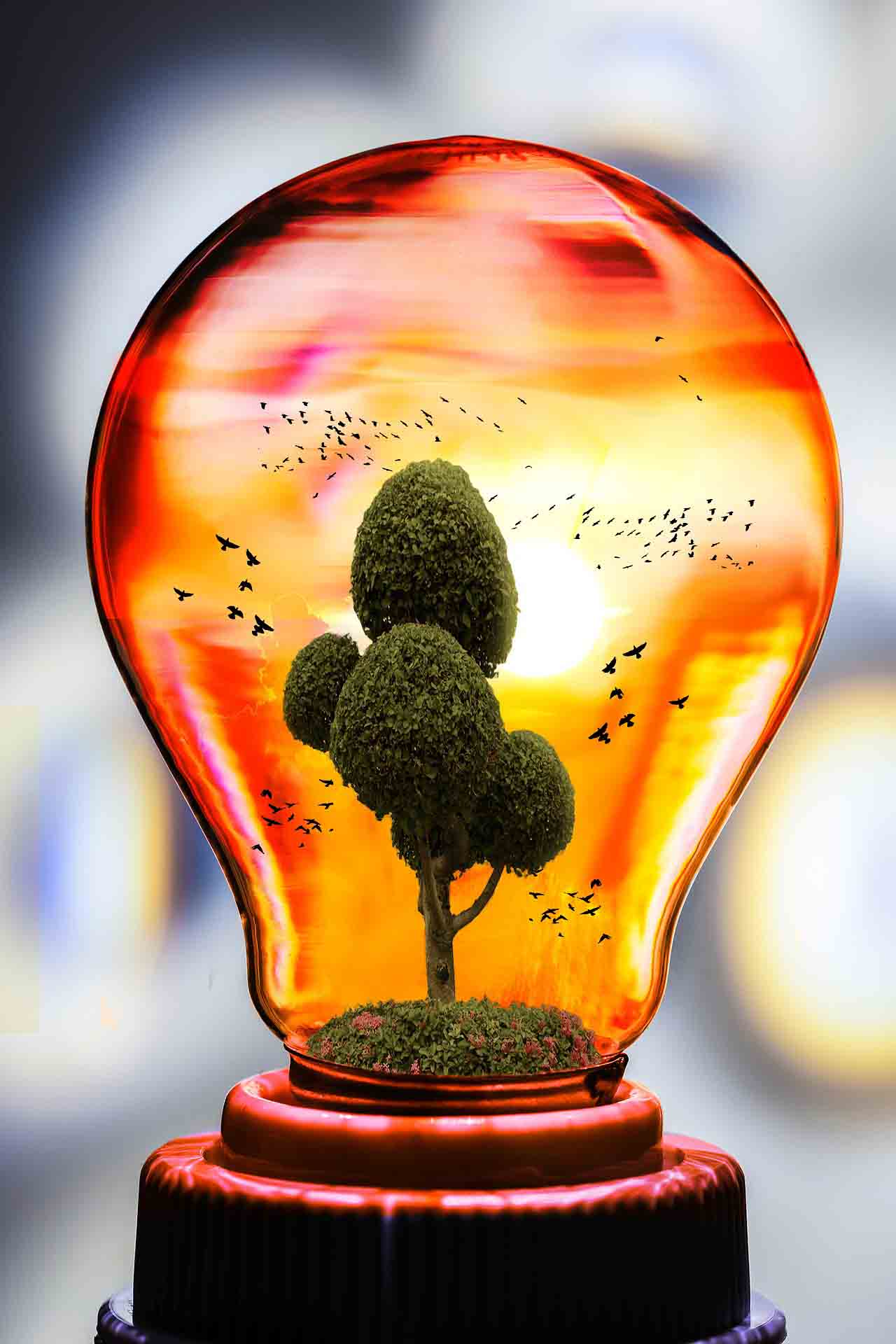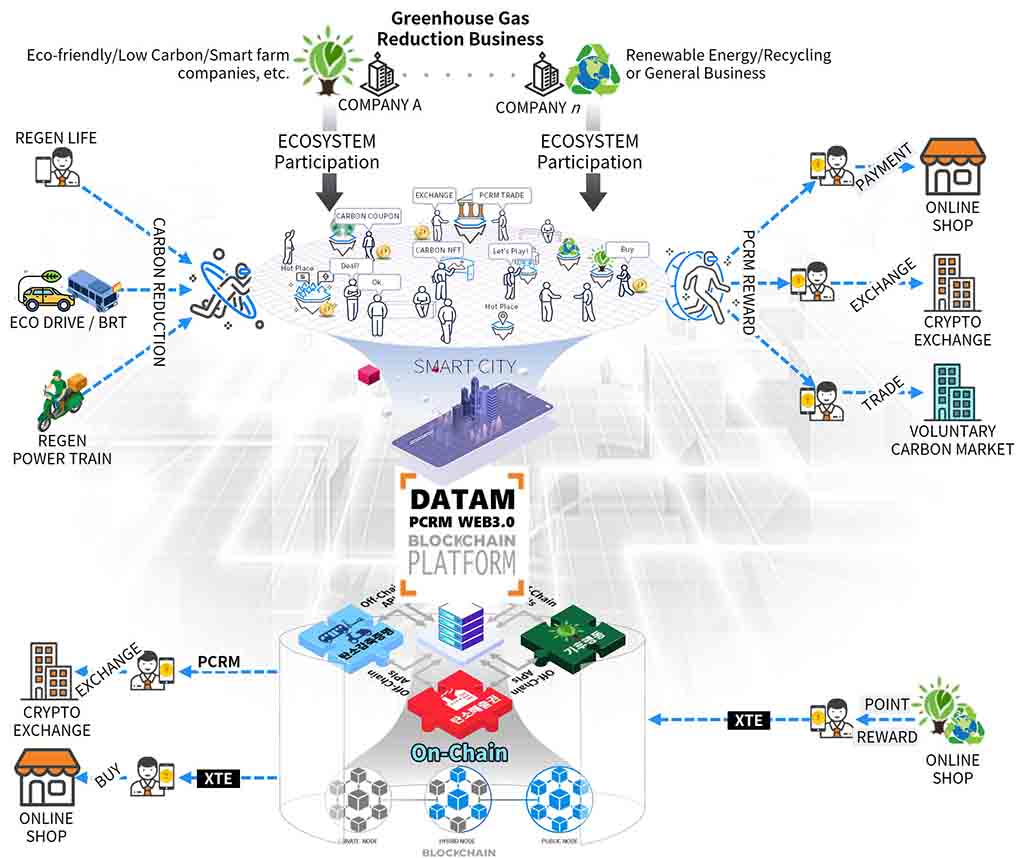CLIMATE CRISIS
Total global GHG(Greenhouse Gas) emissions in 2016 were 53.4 Gton CO2, of which 35.8 Gton CO2 were emitted by human activities and 15.9% (5.6 Gton CO2) occurred in passenger cars, trucks, buses, and motorcycles.
In 2017, the number of vehicles in the world is about 1.3 billion, and about 100 million vehicles are produced and sold every year. Therefore, GHG emissions of vehicles are expected to increase.
POST-2020, which replaces the Kyoto Protocol that exclusively held developed nations responsible for GHG emissions reductions, requires all signatory nations including developing nations to reach their GHG emissions targets. However, GHG emissions reductions in the transportation must be addressed.
An additional function has been added to PCR blockchains to improve on issues found in previous blockchain models. POW (Proof of Work) methods used in previous blockchain models led to excessive mining competition and energy consumption, and also POS (Proof of Stake) methods introduced as its alternative does not require mining, but it faces difficulty in joining and increasing new users.

SOLUTION
The International Transport Forum (ITF) predicts an expansion of the role of public transportation and increase in supply of eco-friendly vehicles (electric and hydrogen-powered vehicles) under POST 2020.
In addition, the transportation industry must act on market-based GHG reduction mechanisms such as CDM(Clean Development Mechanism). CDM or other market-based GHG reduction mechanisms for road transport should also be considered, as road transport contribute to a large proportion of emissions.
Reduction of GHG emissions by transportation requires the development and supply of eco-friendly vehicles such as electric or hydrogen cars, but feasible measures must also be taken until such vehicles can be commercialized. Increasing fuel efficiency by Eco-drive is a practical option for individuals.
Eco-drive means reducing fuel consumption and CO2 emissions by improving the way, habit, or manner of running transportations. Also, it was verified that this Eco-Drive not only saves energy and reduces CO2 emissions, but also has positive by-effect in stability perspective such as reduction of traffic accidents by controlling impractical overspeed driving.
As the effects and importance of Eco-Drive stand out, a variety of promotion and activation methods in order to supply and activate Eco-Drive are being studied and diverse campaigns were carried out, but Eco-Drive is still not popularly known to the public yet.
To increase the number of people using public transportation (eco-friendly vehicles) and eco-driving, there must be reward for voluntary participation. PCR blockchain utilize a new mining method referred to as Carbon Reduction Mining (CRM) and a respective compensation scheme. CRM conserves, rather than consumes, energy. Proof of Carbon Reduction (PCR) is a system that compensates users for energy conserved using CRM, proportionally incentivizing efforts to reduce carbon emissions by quantifying energy and carbon emissions reduced by using CRM.

What is CRM?
CRM(Carbon Reduction Mining) is performed by actions or methods that reduce fuel consumption compared with baseline and quantitatively measuring the results using CRM devices.
What is CRM device?
CRM device is an easy-to-install device that can be plugged into vehicles. Then it monitors and measures the CO2 emission changes and transmits the data to PCR Blockchain network.
What is PCR?
Based on the data collected from CRM device, PCR(Proof of Carbon Reduction) Blockchain evaluates the data through validation and valuation process to calculate the exact amount of carbon emission reduced. It is called the Proof of Carbon Reduction.
What is PCR Reward System?
PCR Blockchain converts the amount of CO2 reduced into PCR and the Cash s will be transferred to the owner of CRM device as a reward automatically.
PCRM PHILOSOPHY
This is a blockchain-based reward system for carbon emission reduction certificates, utilizing numerous patented concepts, for various validated projects related to global climate actions (UNFCCC CDM, SDM) and other innovative approaches.
Through patented algorithms and advanced MRV (Monitoring, Reporting, Verification) technology, we aim to quantify the carbon reduction achieved through climate actions. By tokenizing valuable big data, we provide a sustainable ecosystem with a circular structure, contributing to the development of private-sector-led carbon reduction initiatives.

PCRM is a blockchain-based carbon offset certification that utilizes big data from MRV (Measurement, Reporting, and Verification) as the foundation for carbon reduction throughout the lifecycle.
PCRM ECOSYSTEM
PCRM is a blockchain-based carbon offset certification that can be applied to economic and data production activities in various channels of the Multi {Channel, Contents, Commerce} Network. It can issue blockchain-based carbon offset certifications for areas where low-carbon climate actions are possible through the application of carbon reduction methodologies.
Users participating in various events generated by users and stakeholders in each field will receive various benefits and access to a leading technological and service environment through the PCRM WEB 3.0 blockchain platform.
The PCRM WEB 3.0 blockchain platform provides not only Payment Tokens, which are by-products of blockchain operations, but also Utility Tokens for carbon credits, convenient payments, security/authentication, and Smart Contract functionalities, offering users and businesses a new lifecycle and ecosystem.


